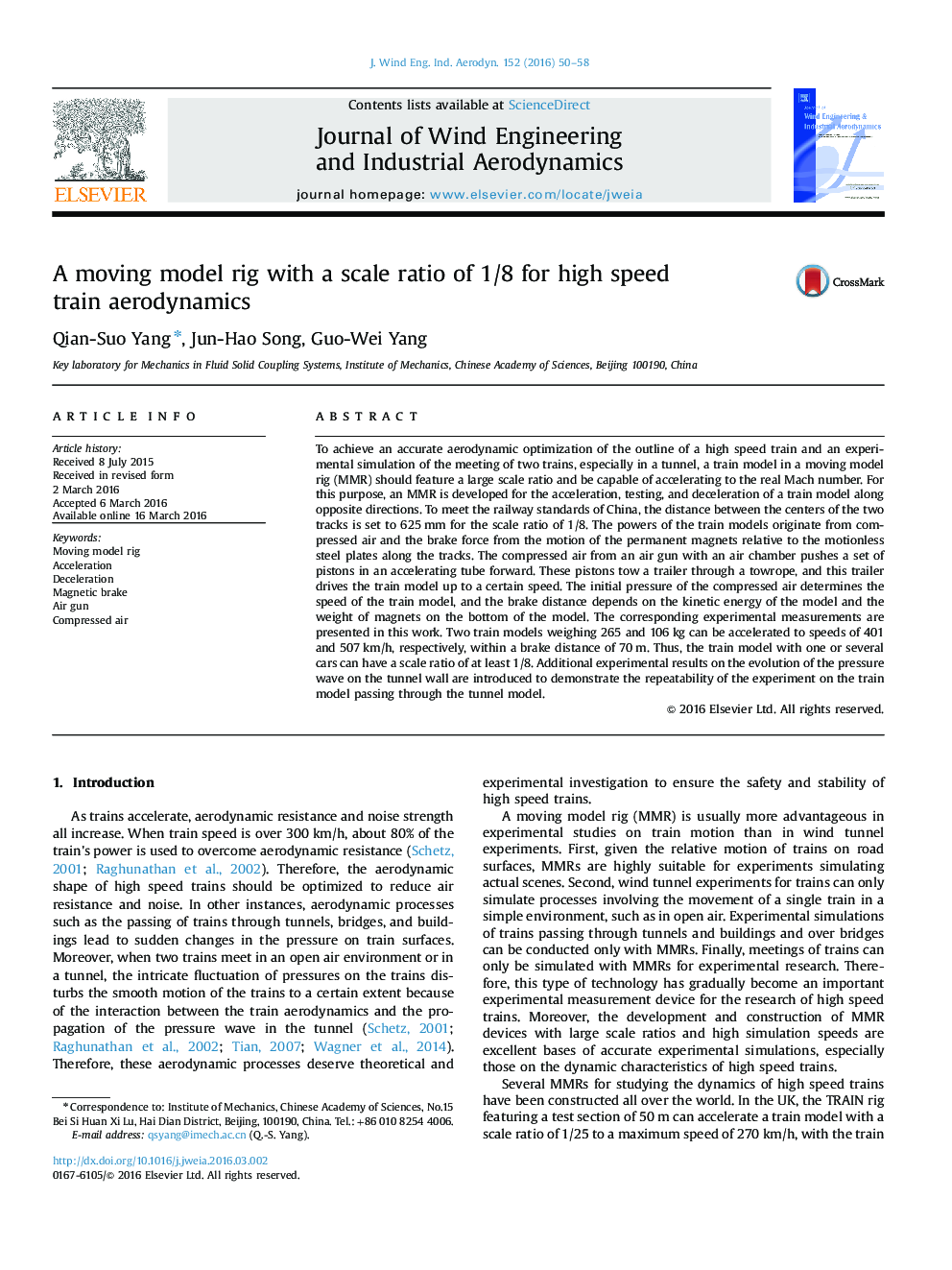| Article ID | Journal | Published Year | Pages | File Type |
|---|---|---|---|---|
| 292755 | Journal of Wind Engineering and Industrial Aerodynamics | 2016 | 9 Pages |
•A moving model rig with a scale ratio of 1/8 for high speed train aerodynamics along two opposite directions was developed.•The pistons in the acceleration tube are pushed by the compressed air and pulls the trailer and train model with a towrope.•The brake forces of the train model and trailer are from the motion of the permanent magnets relative to the steel plates.
To achieve an accurate aerodynamic optimization of the outline of a high speed train and an experimental simulation of the meeting of two trains, especially in a tunnel, a train model in a moving model rig (MMR) should feature a large scale ratio and be capable of accelerating to the real Mach number. For this purpose, an MMR is developed for the acceleration, testing, and deceleration of a train model along opposite directions. To meet the railway standards of China, the distance between the centers of the two tracks is set to 625 mm for the scale ratio of 1/8. The powers of the train models originate from compressed air and the brake force from the motion of the permanent magnets relative to the motionless steel plates along the tracks. The compressed air from an air gun with an air chamber pushes a set of pistons in an accelerating tube forward. These pistons tow a trailer through a towrope, and this trailer drives the train model up to a certain speed. The initial pressure of the compressed air determines the speed of the train model, and the brake distance depends on the kinetic energy of the model and the weight of magnets on the bottom of the model. The corresponding experimental measurements are presented in this work. Two train models weighing 265 and 106 kg can be accelerated to speeds of 401 and 507 km/h, respectively, within a brake distance of 70 m. Thus, the train model with one or several cars can have a scale ratio of at least 1/8. Additional experimental results on the evolution of the pressure wave on the tunnel wall are introduced to demonstrate the repeatability of the experiment on the train model passing through the tunnel model.
